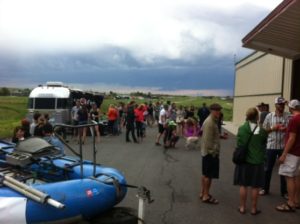For over six million years, the Colorado River flowed from the Never Summer mountains in what is now Rocky Mountain National Park, to the sea of Cortez- cutting through over a vertical mile of a vast landscape while carving majestic canyons along the way.
When the Ute and Arapaho tribes came to the Grand Lake area, near the headwaters of the Colorado River, they saw what was once a raging river. But through transmountain diversions, like Colorado- Big Thompson, the river seen by early inhabitants is not the same river it is today.
At the turn of the Century, when spring snow melt occurred, the waters of the Colorado would fill the banks and flood mountain valleys. While on the other side of the Continental Divide, farmers and ranchers along the plains were starving for water. In 1933, the Greeley Chamber of Commerce formed a committee to survey a transmountain diversion that would tap into the Colorado River headwaters near Grand Lake.
The groups lobbying for the diversion- named Colorado- Big Thompson (C-BT)- got their way in 1938 when Congress approved the project. And 19 years later in 1957, the project was completed. The C-BT was the biggest transmountain water diversion the state of Colorado has ever seen.
 The water from the Upper Colorado flows from Lake Granby (which acts as the storage facility), then it is is pumped into Shadow Mountain Reservoir where it then flows down into Grand Lake. From Grand Lake, the water then is pumped through the 13.1 mile long Alva B. Adams Tunnel under the Continental Divide and flows into the Big Thompson River. From there, the water drops into power plants that supply the pumps on the western slope.
The water from the Upper Colorado flows from Lake Granby (which acts as the storage facility), then it is is pumped into Shadow Mountain Reservoir where it then flows down into Grand Lake. From Grand Lake, the water then is pumped through the 13.1 mile long Alva B. Adams Tunnel under the Continental Divide and flows into the Big Thompson River. From there, the water drops into power plants that supply the pumps on the western slope.
In it's first year, 230,000 acre feet were transferred across the divide annually. Since then, the number of acre feet taken from the Upper Colorado is around 213,000 according to Northern Water. The tunnel can also contain flows of 550 cubic feet per second.
While the project is able to keep the eastern slope alive during drought years and helps support Colorado's agriculture economy, the Colorado River itself is harmed. In order to build the C-BT, Green Mountain reservoir needed to be constructed along the Blue River. This was built in order to store water that the C-BT took out of the Colorado.
However, there are about 34 miles of river between Lake Granby- where water is taken- and the Blue River confluence- where the water is returned. This leaves a "hole" in the river. Along this stretch, the river and it's fishery is slowing fading away.
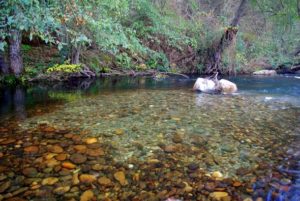 As the flows of the Upper Colorado are depleted by the diversion projects, the natural cleansing of the river fails to occur. Each spring, rivers experience flushing flows- an increase in water flow that breaks up sediment buildup along the stream bed. When the river isn't able to clean itself from sediment buildup between cobblestone, it doesn't allow for insects to hatch or fish to spawn.
As the flows of the Upper Colorado are depleted by the diversion projects, the natural cleansing of the river fails to occur. Each spring, rivers experience flushing flows- an increase in water flow that breaks up sediment buildup along the stream bed. When the river isn't able to clean itself from sediment buildup between cobblestone, it doesn't allow for insects to hatch or fish to spawn.
Insects in the river hatch from the bottom of the cobblestone, but when the sediment concretes between the rocks, they aren't able to access the underside of the rock and hatch- leaving limited food sources for the trout in the water. The trout also needs the rocks to spawn as they turn rocks over to create their redds, which can't be done when sediment cements the rocks in place.
Under Senate Document 80- the document approving the C-BT and requiring the construction of Green Mountain reservoir- the document also states that the project needs, "to preserve the fishing and recreational facilities and the scenic attractions of Grand Lake, the Colorado River, and the Rocky Mountain National Park."
 The West needed water to expand. Currently, 80 percent of Colorado's population is on the east of the Divide while 80 percent of the water is on the west side. This means that in order to thrive, water needed to be diverted. The C-BT opened the door to other transmountain diversions- including the Moffat Tunnel from the Fraser River, another tributary of the Upper Colorado headwaters.
The West needed water to expand. Currently, 80 percent of Colorado's population is on the east of the Divide while 80 percent of the water is on the west side. This means that in order to thrive, water needed to be diverted. The C-BT opened the door to other transmountain diversions- including the Moffat Tunnel from the Fraser River, another tributary of the Upper Colorado headwaters.
While these diversions help the east slope, they are hurting the river. Through collaboration work among TU and water suppliers with hemp from very passionate individuals, we are working together to bring the river back to health.
The river will never be what is once was when the Ute and Arapaho tribes hunted and fished along its shores, but the river can return to a health that is good for people, insects and trout alike.






 There was no fish mortality documented from the spill, while bug sampling by an aquatic biologist with Mountain Studies Institute indicates a still thriving population of mayfly nymphs and caddis pupa. Colorado Parks and Wildlife (CPW) had installed pens of fingerling trout in the Animas before the plume arrived- and none of those fish died either. CPW ran an electro-shocking episode after the “Spill” with the usual re-capture protocol and got essentially the same results as the year before. Actually, the survey showed a slight improvement.
There was no fish mortality documented from the spill, while bug sampling by an aquatic biologist with Mountain Studies Institute indicates a still thriving population of mayfly nymphs and caddis pupa. Colorado Parks and Wildlife (CPW) had installed pens of fingerling trout in the Animas before the plume arrived- and none of those fish died either. CPW ran an electro-shocking episode after the “Spill” with the usual re-capture protocol and got essentially the same results as the year before. Actually, the survey showed a slight improvement. Getting the river back to it's usual state was no easy task but Trout Unlimited and partners were willing to take the lead. "It’s been quite a year since the Gold King spill sent a torrent of yellow, metal-laden mine water down the Animas River in SW Colorado," said Ty Churchwell, TU San Juan Mountains Coordinator. "But long before this unfortunate event, TU was deeply embedded in the water quality conversation – and now we’ve doubled down. Our efforts to pass Good Samaritan legislation are bearing fruit in the form of a bipartisan discussion draft now working its way through the halls of Congress. We hope to see the bill formally introduced this session."
Getting the river back to it's usual state was no easy task but Trout Unlimited and partners were willing to take the lead. "It’s been quite a year since the Gold King spill sent a torrent of yellow, metal-laden mine water down the Animas River in SW Colorado," said Ty Churchwell, TU San Juan Mountains Coordinator. "But long before this unfortunate event, TU was deeply embedded in the water quality conversation – and now we’ve doubled down. Our efforts to pass Good Samaritan legislation are bearing fruit in the form of a bipartisan discussion draft now working its way through the halls of Congress. We hope to see the bill formally introduced this session."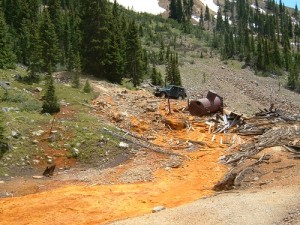 The Good Samaritan Legislation would address the current pollution clean-up laws in the United States. Currently, the Clean Water Act and the Comprehensive Environmental Response, Compensation, and Liability Act, place the clean-up burden on the property owners. But in the case of these abandoned mines, the owners are long-gone. Now the clean-up falls on the shoulders of Good Samaritans like TU and other partners. However, the liabilities in the laws- requiring a project to show significant improvements for a specific period of time and makes the Good Samaritan liable for any failures in improvements- have caused a legal gridlock.
The Good Samaritan Legislation would address the current pollution clean-up laws in the United States. Currently, the Clean Water Act and the Comprehensive Environmental Response, Compensation, and Liability Act, place the clean-up burden on the property owners. But in the case of these abandoned mines, the owners are long-gone. Now the clean-up falls on the shoulders of Good Samaritans like TU and other partners. However, the liabilities in the laws- requiring a project to show significant improvements for a specific period of time and makes the Good Samaritan liable for any failures in improvements- have caused a legal gridlock.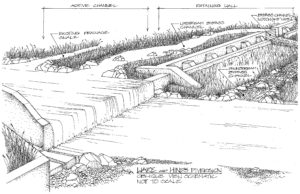 TU partnered with CPW to design and build a fish passage channel around the Ware and Hinds irrigation diversion structure on Elk Creek, a tributary to the Colorado River main-stem with its confluence at New Castle, CO. The Ware and Hinds diversion structure spans the width of the channel and presents a barrier to spawning fish moving out of the Colorado River main-stem
TU partnered with CPW to design and build a fish passage channel around the Ware and Hinds irrigation diversion structure on Elk Creek, a tributary to the Colorado River main-stem with its confluence at New Castle, CO. The Ware and Hinds diversion structure spans the width of the channel and presents a barrier to spawning fish moving out of the Colorado River main-stem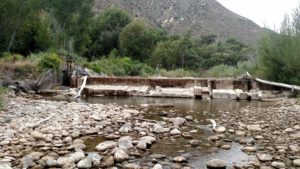 The fish passage project could not have moved forward without the work from the Ferdinand-Hayden Chapter by raising $3,000 that allowed for the preliminary engineering to be completed. "This came at a critical time when I needed to finalize our design drawings," said Richard Van Gytenbeek, Colorado River Basin Outreach Coordinator. "Their contribution allowed me to pay the engineer and complete the drawings which kept the project going."
The fish passage project could not have moved forward without the work from the Ferdinand-Hayden Chapter by raising $3,000 that allowed for the preliminary engineering to be completed. "This came at a critical time when I needed to finalize our design drawings," said Richard Van Gytenbeek, Colorado River Basin Outreach Coordinator. "Their contribution allowed me to pay the engineer and complete the drawings which kept the project going."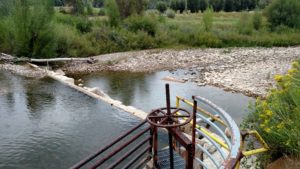 The Elk Creek passage also demonstrates the
The Elk Creek passage also demonstrates the 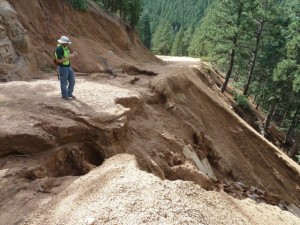 Trout populations can be negatively affected by this excessive sediment, and it can take years for these populations to recover. According to CPW, "The South Platte River in and downstream of the Hayman burn area has only recently begun to return to the quality fishery that it was prior to the fire." The Hayman fire occurred in 2002.
Trout populations can be negatively affected by this excessive sediment, and it can take years for these populations to recover. According to CPW, "The South Platte River in and downstream of the Hayman burn area has only recently begun to return to the quality fishery that it was prior to the fire." The Hayman fire occurred in 2002.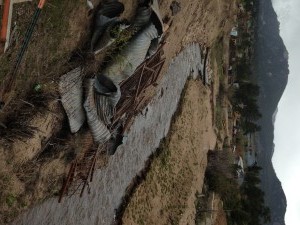
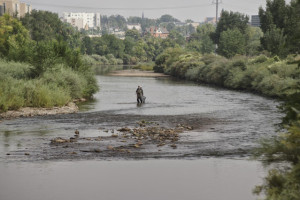 As the Denver Metro area continues to grow, the water needs rise with it and the unreliable flows from the South Platte River aren't enough to supply roughly 80% of the state's population with water throughout the year. Which is why water from the Upper Colorado River headwaters- in this case the Fraser River- are diverted for Front Range usage.
As the Denver Metro area continues to grow, the water needs rise with it and the unreliable flows from the South Platte River aren't enough to supply roughly 80% of the state's population with water throughout the year. Which is why water from the Upper Colorado River headwaters- in this case the Fraser River- are diverted for Front Range usage. Learning by Doing requires regular monitoring of stream temperature, riparian vegetation, and aquatic macro-invertebrates. If an environmental problem is detected, Denver Water will provide some financial support and additional flows to help solve the issue. This includes providing the flushing flows the river needs in the spring to clean sediment build up.
Learning by Doing requires regular monitoring of stream temperature, riparian vegetation, and aquatic macro-invertebrates. If an environmental problem is detected, Denver Water will provide some financial support and additional flows to help solve the issue. This includes providing the flushing flows the river needs in the spring to clean sediment build up.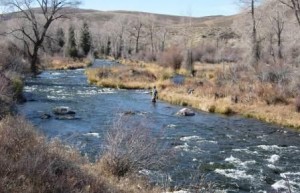 "This project strikes a necessary balance between the water needs of Front Range municipalities and the need to protect healthy flows and fish and wildlife habitat in the Fraser River," said David Nickum, Executive Director of Colorado TU. "The so-called “Learning by Doing” program in the proposal sets up a collaborative process that requires water users to monitor the health of the river in coming years and adjust operations to address unforeseen challenges and opportunities. Moreover, Denver Water has entered into partnerships on the Front Range to ensure that the project alleviates chronic low-flow problems in South Boulder Creek. Both sides of the Divide benefit.”
"This project strikes a necessary balance between the water needs of Front Range municipalities and the need to protect healthy flows and fish and wildlife habitat in the Fraser River," said David Nickum, Executive Director of Colorado TU. "The so-called “Learning by Doing” program in the proposal sets up a collaborative process that requires water users to monitor the health of the river in coming years and adjust operations to address unforeseen challenges and opportunities. Moreover, Denver Water has entered into partnerships on the Front Range to ensure that the project alleviates chronic low-flow problems in South Boulder Creek. Both sides of the Divide benefit.”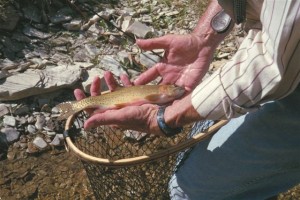
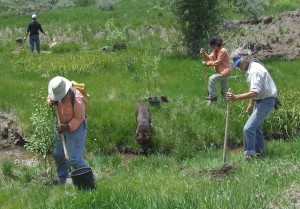
 The water from the Upper Colorado flows from Lake Granby (which acts as the storage facility), then it is is pumped into Shadow Mountain Reservoir where it then flows down into Grand Lake. From Grand Lake, the water then is pumped through the 13.1 mile long Alva B. Adams Tunnel under the Continental Divide and flows into the Big Thompson River. From there, the water drops into power plants that supply the pumps on the western slope.
The water from the Upper Colorado flows from Lake Granby (which acts as the storage facility), then it is is pumped into Shadow Mountain Reservoir where it then flows down into Grand Lake. From Grand Lake, the water then is pumped through the 13.1 mile long Alva B. Adams Tunnel under the Continental Divide and flows into the Big Thompson River. From there, the water drops into power plants that supply the pumps on the western slope. As the flows of the Upper Colorado are depleted by the diversion projects, the natural cleansing of the river fails to occur. Each spring, rivers experience flushing flows- an increase in water flow that breaks up sediment buildup along the stream bed. When the river isn't able to clean itself from sediment buildup between cobblestone, it doesn't allow for insects to hatch or fish to spawn.
As the flows of the Upper Colorado are depleted by the diversion projects, the natural cleansing of the river fails to occur. Each spring, rivers experience flushing flows- an increase in water flow that breaks up sediment buildup along the stream bed. When the river isn't able to clean itself from sediment buildup between cobblestone, it doesn't allow for insects to hatch or fish to spawn. The West needed water to expand. Currently, 80 percent of Colorado's population is on the east of the Divide while 80 percent of the water is on the west side. This means that in order to thrive, water needed to be diverted. The C-BT opened the door to other transmountain diversions- including the Moffat Tunnel from the Fraser River, another tributary of the Upper Colorado headwaters.
The West needed water to expand. Currently, 80 percent of Colorado's population is on the east of the Divide while 80 percent of the water is on the west side. This means that in order to thrive, water needed to be diverted. The C-BT opened the door to other transmountain diversions- including the Moffat Tunnel from the Fraser River, another tributary of the Upper Colorado headwaters.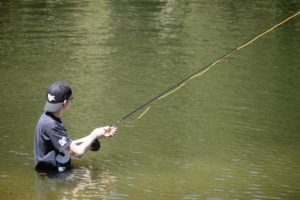 The first day began with a basic entomology class on bugs and their life cycles. Volunteers and camp leaders also showed the students what fish eat, and the flies that represent these species and phases. All of this was don in order to give students a better understanding of what the term “fly” fishing actually means.
The first day began with a basic entomology class on bugs and their life cycles. Volunteers and camp leaders also showed the students what fish eat, and the flies that represent these species and phases. All of this was don in order to give students a better understanding of what the term “fly” fishing actually means.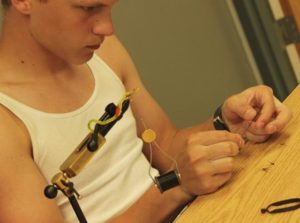
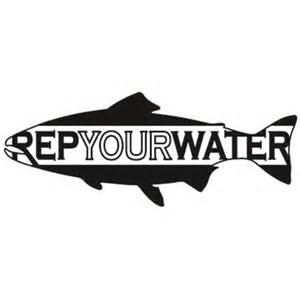 By: Ameen Hosain
By: Ameen Hosain